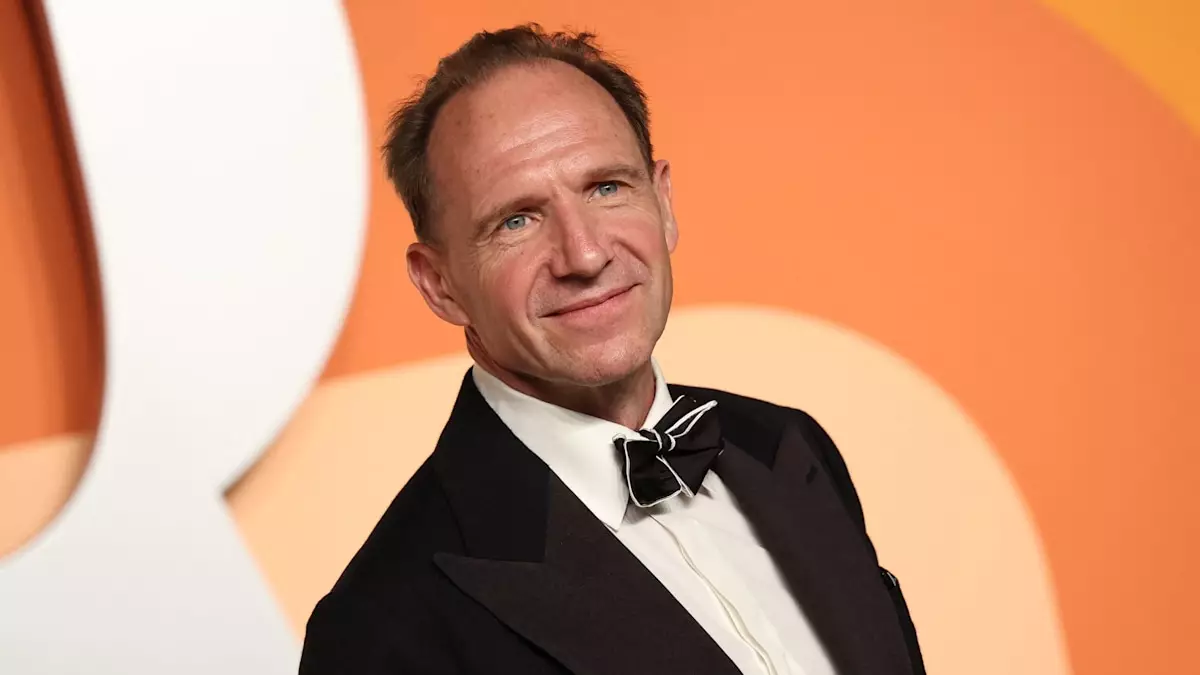At 62 years old, Ralph Fiennes, known globally for his portrayal of dark characters like Voldemort in the Harry Potter series, has recently achieved a stunning physical transformation. While his talent has long been celebrated, it is this remarkable shift in his physique ahead of his role in a remake of *The Return* that has garnered him widespread admiration and conversation. Renowned personal trainer Dan Avasilcai orchestrated this transformation through a rigorous five-month training regimen, combining weight training with cardio, all fueled by a diet rich in proteins, complex carbohydrates, and an abundance of vegetables. This dramatic change has left fans in shock, as Fiennes looks almost unrecognizable compared to his recent role as Cardinal Lawrence in the political thriller *Conclave*.
As an observer of this transformation, one can’t help but appreciate the sheer dedication and discipline required to achieve such a life-altering fitness overhaul. Unlike typical celebrity transformations that might be attributed to intense short-term efforts or extreme diets, Fiennes’ journey highlights the importance of consistency and a tailored approach to fitness.
Insights from the Experts: The Road to an Impressive Physique
To delve deeper into what it takes to sculpt a physique reminiscent of Fiennes’, insights from fitness professionals can provide valuable context. Personal trainer Jack Claxton, who works with clients at David Lloyd Clubs, offers a clear perspective—achieving such a physique demands an intense and consistent routine, especially for someone of Fiennes’ age. Claxton recommends a structured program of four to five gym sessions weekly that emphasizes a mix of strength and athletic training. His insights are especially relevant considering that fitness in later years transcends mere aesthetics; it becomes about health, longevity, and functional independence.
However, what makes Fiennes’ transformation particularly instructive for the average person is the nuanced understanding that fitness is not a one-size-fits-all endeavor. Emerging from their 40s and 50s, many individuals might feel inclined to revert to their youth and push their bodies as they once did. Yet, as Ronni McKay from GymBox articulates, it is crucial to recognize that such practices could lead to injury rather than progression. A personalized approach that speaks to the unique needs of older adults is paramount.
The Balanced Approach: Training for Longevity
McKay emphasizes the need for a holistic fitness approach, particularly for those in their 60s. It is more than just lifting weights; it requires a fusion of power, mobility, and recovery strategies. For beginners or those returning to fitness post-hiatus, Claxton advises a gentler introduction—two to three sessions of weight training weekly using lower-impact exercises. This tailored methodology can establish a solid foundation without overwhelming the body.
A core component of this is integrating cardiovascular exercises aimed at enhancing VO2 max, which is essential for overall stamina and endurance. By recommending sessions dedicated to both upper and lower body resistance training paired with cardio, fitness professionals highlight the variability necessary to prevent plateauing and promote both safety and effectiveness.
Paving the Way for Future Generations
The excitement surrounding Fiennes’ transformation is not merely about his aesthetic success; it serves as a beacon for those contemplating their fitness journeys at any age. The narrative pushes back against the cognitive dissonance that often accompanies aging—namely, the idea that youth is synonymous with vigor. Instead, the discussion emphasizes a responsible approach that promotes healthy aging, reinforcing that fitness should accommodate the body’s evolving capabilities.
McKay’s insight into focusing on compound movements like squats and deadlifts, combined with daily mobility drills, poignantly underscores that fitness is as much about practical functionality as it is about physical appearance. As society becomes more aware of the aging population’s health needs, we must advocate for fitness regimens that prioritize long-term wellness over fleeting quick fixes.
The dialogue sparked by Ralph Fiennes’ transformation invites reflection and inspires action. Whether one seeks to emulate the actor’s journey or simply aims for better health, the principles of dedication, awareness of one’s physiology, and the importance of a tailor-made fitness regimen ring true across generations. Everyone possesses the ability to change their lives for the better; all it takes is the first step.

